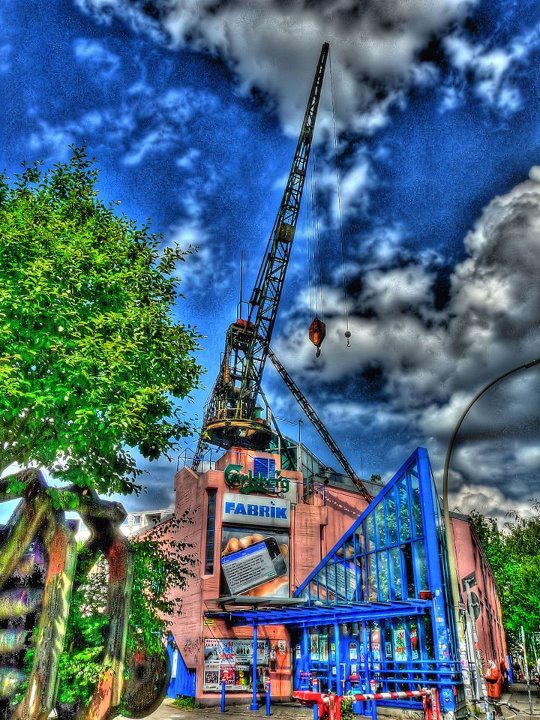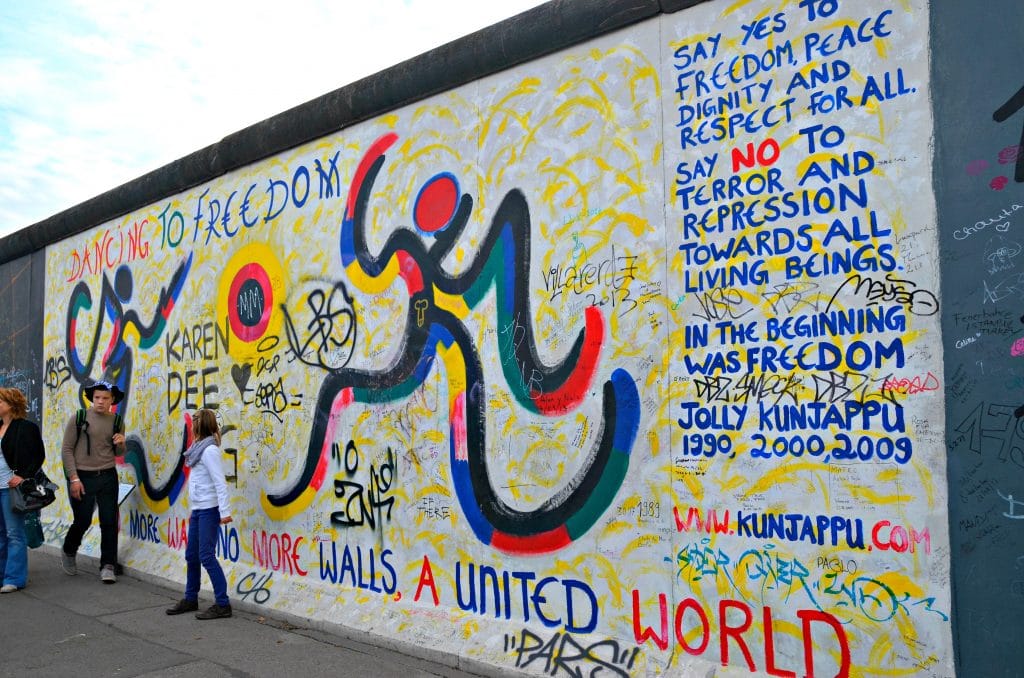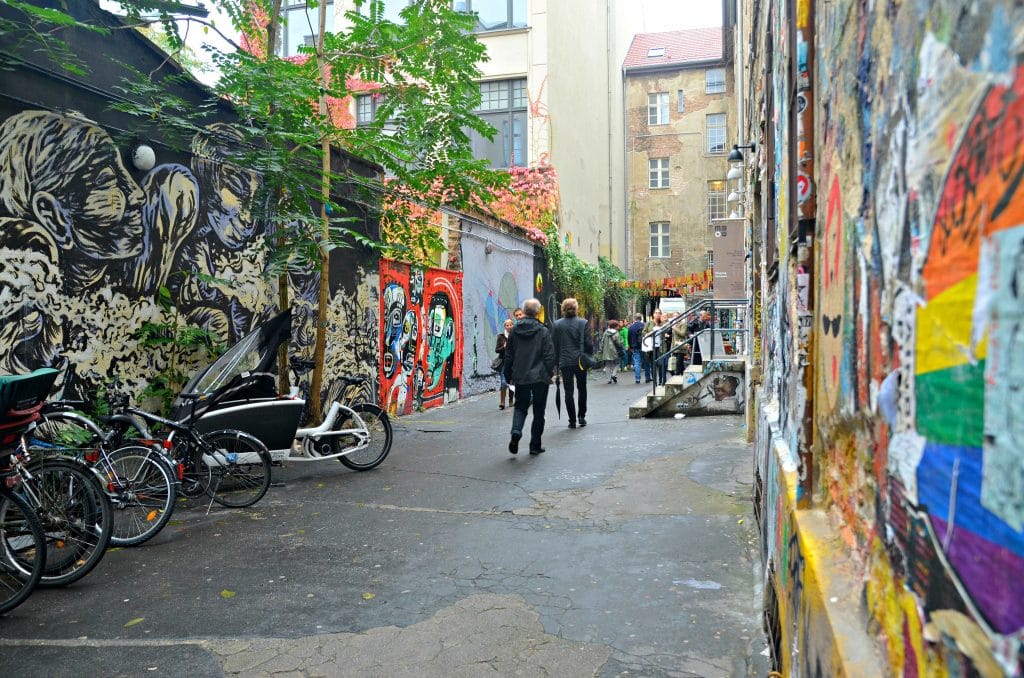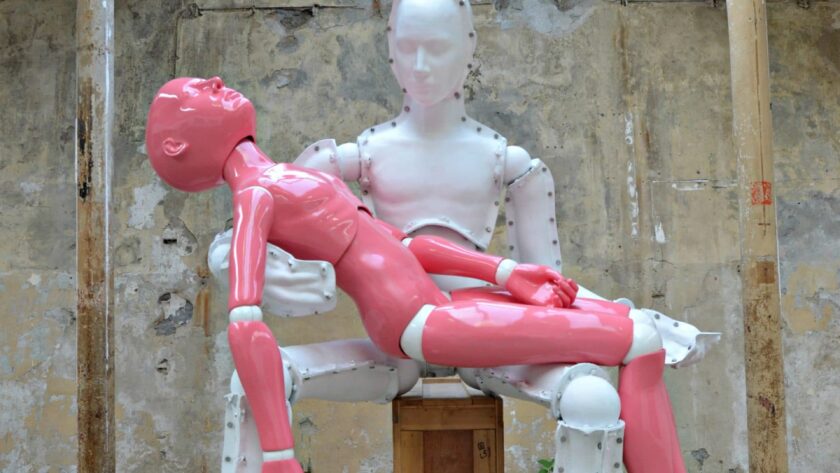As a culture carnivore, I’m always on the lookout for immersive cultural experiences when traveling. On a recent trip through Germany — specifically Hamburg, Leipzig and Berlin — I instantly fell in love with the destination. It’s hard to believe history when you look into Germany’s past, from World War II to the Berlin Wall to the Cold War, and then see the country’s beautiful and lively cities. While never forgetting and continuing to pay homage to these events and the people who lost their lives through memorials, museums and festivals, Germany also continues to grow through gastronomy, infrastructure, and art and culture offerings.
To help you plan your trip, here is a guide to the top 11 cultural experiences in Germany, written in honor of the upcoming 25th anniversary of the falling of the Berlin Wall.
And if you’ll be in Berlin this November, don’t miss the many events and installations coinciding with the anniversary, the highlight being the letting go of thousands of white balloons on the weekend of November 9, 2014, to symbolize a world without walls.

1. Fabrik (Hamburg)
Once a machine parts factory, today Fabrik hosts a number of cultural events — from concerts to debates to lectures and beyond — while still paying homage to its industrial past. In fact, the building appears to be suspended from a working crane, although that’s actually part of the design. Nearby, Zeisehallen is a complex housing an independent cinema, restaurants, a jewelry shop and creative venues in a former propeller parts factory.

2. Stilwerk (Hamburg)
Stilwerk is a 6-floor design concept featuring 28+ design, lifestyle and art shops that are free to enjoy and will surely spark your creativity. Along with art galleries, there are a number of spaces outfitted like rooms in a home or office, done in an innovative way with furniture that goes beyond practical, but into the realm of higher thinking art. While you can make purchases, it’s akin to wandering a creativity-igniting museum.

3. St. Thomas Church (Leipzig)
For anyone interested in classical music or Bach, St. Thomas Church in Leipzig — Bach’s former workplace — is a must visit. Inside you’ll find a colorful stained glass window dedicated to Bach, Bach cantatas by the St. Thomas Boys Choir, a Bach-style pipe organ and Bach himself buried in the church sanctuary. Across the street, the Bach-Museum Leipzig houses original manuscripts, artifacts and sound recordings.

4. Spinnerei (Leipzig)
Once a cotton mill in 1907, Spinnerei today houses an artist complex that still retains its original industrial feel, with an exterior that has remained the same and a small museum housing old black and white photos and machines from the early 18th century. Located near the Plagwitz S-Bahn Station, Spinnerei offers the chance to immerse yourself in Leipzig’s contemporary arts scene for free, as you explore the 14+ galleries as well as artist studios and creative shops. Make sure to stop in Eigen + Art, the oldest gallery in Leipzig, opened in 1983 as an illegal gallery and salon in the GDR.

5. The Interactive Forum of Contemporary History (Leipzig)
For those who have a hard time comprehending major historical events, The Interactive Forum of Contemporary History makes Germany’s Post WWII history simple to understand. Not only are signs in English, but multi-media and life-sized exhibits transport you to events and scenes like entering West Berlin as a refugee and the falling of the Berlin Wall. While at many times a somber experience as you learn about the propoganda used against East German citizens in the Germany Democratic Republic (GDR) — which was actual communist — and how the Stasi secret police kept tabs on everyone, even reading every single piece of mail that entered, it was uplifting to learn about the Peaceful Revolution in Leipzig and how non-violent protesting helped lead to the re-unification of Germany and the start of true democracy.

6. The Berlin Wall (Berlin)
No trip to Berlin, whether exploring German heritage or not, would be complete without a visit to the Berlin Wall. After WWII, Germany was divided, with the East being ruled by the Soviets under Communism. As people were constantly leaving for the more liberal and free West Germany, which was hurting the East Germany economy, the Berlin Wall was built and anyone who tried to cross it could be shot and killed. While the Wall itself is no longer up, bits of it are as part of a Berlin Wall Memorial with adjoining museum. Within the Memorial are tributes to those who lost their lives, information panels and installations showing what things were like during divided Germany.
The most touching thing for me was the Window of Remembrance, housing photos and stories of the victims. One picture I’ll never forget is one of an infant who was accidentally killed by his mother. She tried to silence him with her hand — not knowing he had bronchitis — when he started to cry during the family’s escape into West Germany. While the mother and father survived, the child suffocated and passed away.
To truly understand German culture, you’ll need to understand this part of its history, especially as it was only November 9, 1989, that the wall fell, Germany was re-unified and the country finally enjoyed true democracy.

7. Konnopke Currywurst (Berlin)
Like Kleenex to tissues and Vaseline to petroleum jelly, Konnopke is synonymous with currywurst. It’s not that the dish — a plump sausage doused in curry powder-laced ketchup — isn’t sold elsewhere. But, ask any local and they’ll tell you Konnopke is the very best in the city, despite its stationary food truck-like appearance. Interestingly, the eatery has Been open since 1930, operating through the GDR and serving the first currywurst in East Berlin.
For a more upscale sausage experience, Restaurant Das Meisterstuck offers a variety of sausages — your server can tell you the culture of each, in English or German — that are grilled on an open-flame for diners to view. The ambiance of the restaurant is sophisticated casual, with walls adorned with coo coo clocks and wine bottles and bare wood tables set with linen napkins and wine glasses. Pair your meal with a Bavarian beer.
Bonus: Berlin is also home to the Currywurst Museum, which explores the history and culture of this important dish, with quirky opportunities like sitting on a “Sausage Sofa,” seeing singing ketchup bottles, playing a game where you try to make myriad currywurst as quickly as possible, and sampling an unusual “Currywurst in a Cup.” These are just a few of the fun opportunities in this kitschy museum.

8. Kulturbrauerei (Berlin)
Once a successful brewery in the 19th century and a Testament to Berlin’s thriving economy and industry of the time. Kulturbrauerei — literally meaning “Culture Brewery” — is now a giant cultural complex with over 20 buildings in Berlin complete with restaurants, shops, dance centers, museums and more. It’s a protected site, and one of the city’s best examples of 19th century industrial architecture, designed by the renowned architect Franz Heinrich Schwechten in the late 1800s. Visit during the holidays to experience one of Berlin’s best Christmas markets.

9. East Side Gallery (Berlin)
During the time of the Berlin Wall, there was no art, writing or painting of the East Germany side of the structure. In communist society, citizens were told what to watch, listen to and think, with no room for ideas or thoughts that in any way went against the government or seemed too revolutionary or alternative. After the Fall of the Wall on November 9, 1989, what’s left of the barrier has been partially turned into a Memorial and partially turned into the open air East Side Gallery with 101 colorful murals done by artists from all over the world, speaking about freedom, peace and democracy. It’s a truly inspiring and uplifting site, especially when you think about the positive changes that have occurred in the country in the past 25 years.

10. The Jewish Quarter (Berlin)
While Berlin’s Jewish Quarter is full of history, it’s also an explosion of art experiences. Simply wandering the streets on and around Auguststraße in Berlin-Mitte introduces you to more galleries than you’ll know how to handle: Berlin Barcelona, Eigen + Art, OONA Galerie für Schmuck, Galerie Deschler, Galerie Kicken Berlin, Galerie Juliane Hundertmark and many more. An interesting art and design experience is visiting Hackeschen Höfe, featuring eight courtyards full of artisan shops and galleries. The highlight is Sammlung Hoffmann, the home of Erika and Rolf Hoffman since 1968 showcasing works by popular contemporary artists, which Erika shows visitors on Saturdays for 10 Euros (about $12.50 USD). Nearby, the Museum Otto Weidt’s Workshop, which has a courtyard that still retains a 1989 feel, just after the Wall came down. It’s an interesting mix of gritty and unkempt yet lively and creative, mainly from the abundance of thought-provoking street art.

11) Snack On A Berliner (North Germany)
A typical treat in Berlin, it’s similar to a jelly donut with no center hole. The fried dough is stuffed with marmalade and coated with powdered sugar, granulated sugar or frosting. Plum, cherry, raspberry and strawberry are popular flavors, although if you find one stuffed with chocolate pudding (hint: go to Bäcker Walf!) you won’t be disappointed. Berliners were invented in the 15th century in Berlin, and as the population grew in the next centuries so did the pastry’s popularity. Today, they’re a delicious part of North German culture.
Also Check Out:
Who Wants To Explore Italy’s Amalfi Coast Like A Local?
Coffee Culture: Top Five Cafes In Melbourne, Australia
Colorful Culture: Amazing Lesser-Known South American Festivals
Jessica Festa
Latest posts by Jessica Festa (see all)
- A Culturally-Immersive Adventure In Mongolia’s Altai Mountains - Jul 8, 2023
- This Recipe Sharing Platform Supports Women In The Culinary Industry (Labneh Recipe Included!) - Nov 5, 2020
- Hiking The Mohare Danda Community Eco-Trek In Nepal - Jun 3, 2020
- 6 Important Questions For Choosing A Responsible Yoga Retreat - May 18, 2020
- How To Create & Grow A Profitable Blogging Business (Ethically) - Jan 18, 2020





The locations are simply beautiful and the way the information is handled is very good, everything is quite clear, thank you for taking the time to make quality content.